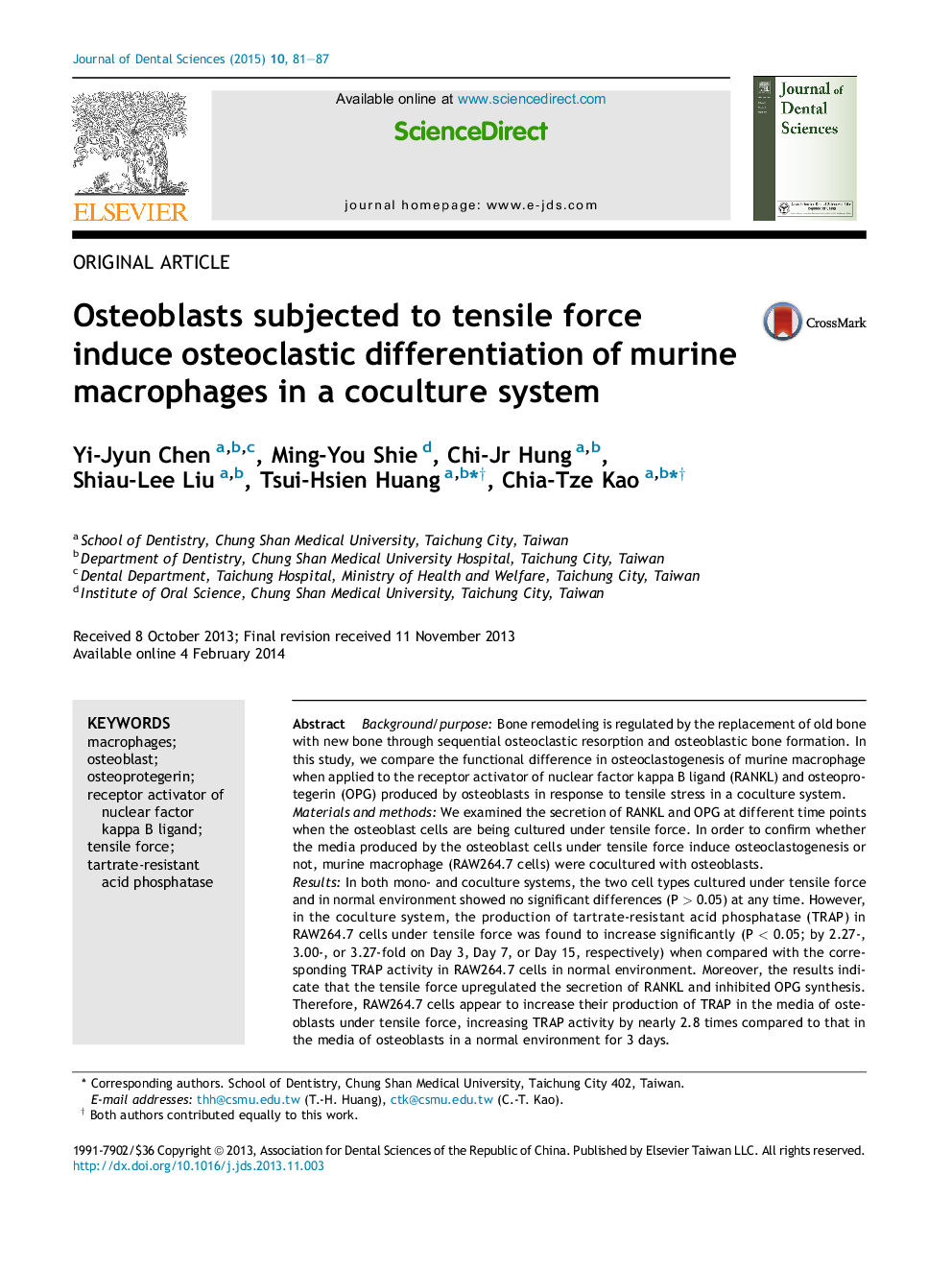| کد مقاله | کد نشریه | سال انتشار | مقاله انگلیسی | نسخه تمام متن |
|---|---|---|---|---|
| 3144671 | 1196988 | 2015 | 7 صفحه PDF | دانلود رایگان |
Background/purposeBone remodeling is regulated by the replacement of old bone with new bone through sequential osteoclastic resorption and osteoblastic bone formation. In this study, we compare the functional difference in osteoclastogenesis of murine macrophage when applied to the receptor activator of nuclear factor kappa B ligand (RANKL) and osteoprotegerin (OPG) produced by osteoblasts in response to tensile stress in a coculture system.Materials and methodsWe examined the secretion of RANKL and OPG at different time points when the osteoblast cells are being cultured under tensile force. In order to confirm whether the media produced by the osteoblast cells under tensile force induce osteoclastogenesis or not, murine macrophage (RAW264.7 cells) were cocultured with osteoblasts.ResultsIn both mono- and coculture systems, the two cell types cultured under tensile force and in normal environment showed no significant differences (P > 0.05) at any time. However, in the coculture system, the production of tartrate-resistant acid phosphatase (TRAP) in RAW264.7 cells under tensile force was found to increase significantly (P < 0.05; by 2.27-, 3.00-, or 3.27-fold on Day 3, Day 7, or Day 15, respectively) when compared with the corresponding TRAP activity in RAW264.7 cells in normal environment. Moreover, the results indicate that the tensile force upregulated the secretion of RANKL and inhibited OPG synthesis. Therefore, RAW264.7 cells appear to increase their production of TRAP in the media of osteoblasts under tensile force, increasing TRAP activity by nearly 2.8 times compared to that in the media of osteoblasts in a normal environment for 3 days.ConclusionThese results suggest that osteoblasts influence the secretion of RANKL more than OPG when stimulated with osteoclastogenesis via RANKL under tensile force.
Journal: Journal of Dental Sciences - Volume 10, Issue 1, March 2015, Pages 81–87
